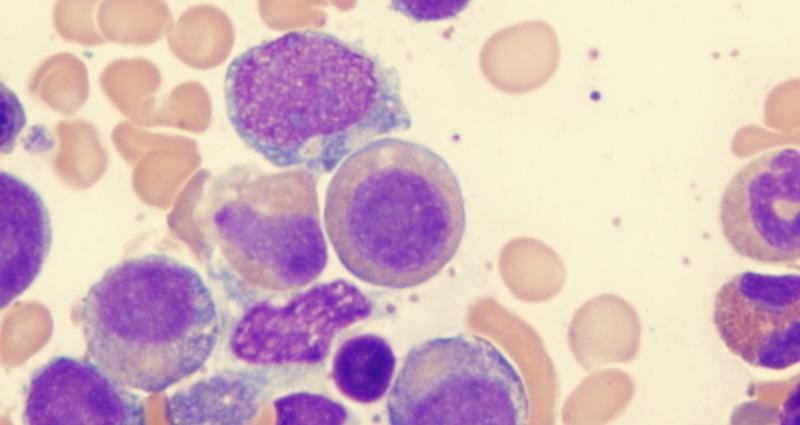Epidemiology of MDS in the U.S., Europe and China
Myelodysplastic syndromes (MDS) refer to a group of related bone marrow disorders characterized by ineffective production of myeloid blood cells. The incidence and prevalence of MDS varies globally. In the United States, the estimated incidence is over 14,000 new cases annually, with a prevalence of over 70,000 people living with the disease. The incidence increases with age, occurring most commonly in elderly populations over 65 years old.
In Europe, the reported annual incidence ranges from 3-5 cases per 100,000 people. Countries with the highest reported rates include Sweden, Denmark, and the United Kingdom. Like the U.S., the risk increases substantially with age in Europe as well. In China, available data indicates an annual incidence of approximately 1-2 cases per 100,000 people. However, it is estimated that the true incidence may be higher as diagnostic capabilities have improved in recent years. MDS affects males slightly more often than females across all regions.
Treatment Approaches in the U.S., Europe, and China Myelodysplastic Syndrome (MDS) Treatment
The primary U.S., Europe, and China Myelodysplastic Syndrome (MDS) Treatment include blood transfusions, pharmacologic therapy, stem cell transplantation, and supportive care measures. Blood transfusions are commonly used to treat anemia by replacing lost red blood cells. Pharmacologic options typically involve medications that promote new blood cell production or control the overproduction of certain cells.
One of the mainstay drugs is lenalidomide, an immunomodulatory drug approved by the FDA in 2005. It is effective for around 30-40% of lower-risk MDS patients. Other medications frequently used include hypomethylating agents like azacitidine and decitabine. These can achieve response rates of 40-60% but are reserved for higher-risk and intermediate-risk subgroups.
For eligible candidates, allogeneic hematopoietic stem cell transplantation offers the potential for cure in 30-50% of cases. However, given its risks and stringent eligibility criteria, it is still considered in less than 15% of U.S. MDS patients. Supportive care focuses on managing symptoms, preventing infections, providing nutritional support, and improving quality of life.
Treatment Approaches in Europe
Across European countries, treatment strategies for MDS largely mirror those utilized in the United States. Blood transfusions, hypoplastic agents, immunomodulatory drugs, and allo-HSCT are all commonly used options based on risk stratification. Additionally, a few European nations have approved novel agents not yet available in the U.S.
For example, in 2019, the European Commission granted marketing authorization for fostamatinib, a tyrosine kinase inhibitor produced by Rigel Pharmaceuticals. It works by blocking signaling ofplatelets and white blood cells and may benefit those with severe and chronic immune thrombocytopenia. In Germany and Switzerland, erythropoiesis-stimulating agents are also approved for anemia in low-risk MDS, despite only having orphan drug status in the U.S.
Access to novel therapies can vary significantly between U.S., Europe, and China myelodysplastic syndrome (MDS) treatment market based on funding and rapidity of drug approval processes. Countries with universal healthcare often have more restrictive criteria limiting use of high-cost drugs compared to private insurance models. Overall, European guidelines are generally aligned with the National Comprehensive Cancer Network Guidelines used in the U.S.
Treatment Approaches in China
Traditional Chinese medical practices are more commonly integrated into MDS care in China compared to Western nations. For example, herbal medicines like Huangqi decoction and Shenqi Fuzheng Injection are frequently prescribed as adjunctive treatment. Their mechanisms are not fully understood but may work via immunomodulation or antioxidant effects.
Mainstream therapies also parallel the U.S. and Europe, including blood product support, chemotherapy, and allo-HSCT. However, accessibility and affordability of novel drugs remains an issue for many Chinese patients living outside major cities. Hypomethylating agents like azacitidine have only been available nationally since 2016 when included in China's National Reimbursement Drug List (NRDL).
Additionally, the practice of allo-HSCT is less developed in China versus Western countries. There are approximately 200 centers performing the procedure annually in China compared to over 500 in the U.S. alone. This is partly due to lacking donor registries and cultural preferences to avoid invasive therapies if possible in early disease stages. Supportive care also emphasizes traditional healing methods over hospice or palliative approaches seen elsewhere.
While treatment approaches for U.S., Europe, and China myelodysplastic syndrome (MDS) treatment market continue evolving globally, many disparities persist across high-income nations and China. Access to novel therapies, stem cell transplantation capability, and integration of cutting-edge science with traditional medicine varies tremendously. Overall, prognosis has improved in all regions as new treatment options have emerged in recent decades. Continued progress is still needed, however, especially regarding accessibility and affordability of care.
Get More Insights on U.S., Europe, and China Myelodysplastic Syndrome (MDS) Treatment
Select the language you're most comfortable with-
About Author-
Ravina Pandya, Content Writer, has a strong foothold in the market research industry. She specializes in writing well-researched articles from different industries, including food and beverages, information and technology, healthcare, chemical and materials, etc. With an MBA in E-commerce, she has an expertise in SEO-optimized content that resonates with industry professionals. (https://www.linkedin.com/in/ravina-pandya-1a3984191)
